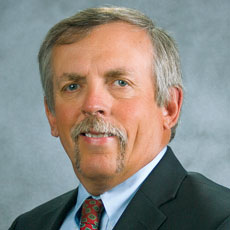
We’ve all heard the old adage attributed to Benjamin Franklin that “an ounce of prevention is worth a pound of cure.” And while Franklin’s famous words were written nearly 285 years ago, they still resonate today, particularly with regards to implementing a safe resident handling program.
An obvious benefit of a safe resident or patient handling program is to provide improved care, safety, and comfort for residents, all while reducing musculoskeletal injuries, skin tears, bruises, and the risks associated with falling during a transfer. But too often, we forget about the caregiver.
It’s no secret that caregivers work in stressful and even dangerous work environments. Caregivers get sick and injured nearly twice as often as workers in all other U.S. industries combined. Many of these injuries occur when caregivers lift or move patients manually, instead of using available mechanical lifts or equipment.
These injuries are also very costly. One nationwide survey of around 1,000 hospitals in all 50 states found patient handling injuries accounted for 25% of all workers’ compensation claims for the healthcare industry in 2011. The average workers’ compensation claim related to patient handling cost $15,600. There may be additional costs, like incident investigation time, productivity loss, and decreased morale.
In some cases, a healthcare provider may even be forced to leave the profession entirely due to injuries sustained from lifting or moving patients. Studies have tried to establish the cost of replacing a caregiver, factoring in things like recruitment, orientation, and training. The cost of replacing a caregiver has been estimated to cost $27,000 to as much as $103,000 per nurse!
So how can patients be kept safe and caregivers protected, all while reducing costs? The solution is simple and can be achieved in three steps.
- The first step is to educate patients and their families on mechanical lifts and their use. Residents and their families should be consulted early about how mechanical lifts and equipment will be used and how it will improve their overall care. A facility’s transfer and mobility policy should be discussed before admission and agreement to the policy should be a pre-requisite for admission.
- Second, it’s important to ensure that caregivers receive education and training to understand not only how, but why to use transfer equipment. All too often, a caregiver relies upon outdated methods, such as “body mechanics,” to move patients. Introduced in 1945, body mechanics is a concept that with proper training, transferring of patients can be performed without the risk of injury. We now know this concept is simply untrue. Instead, caregivers should be empowered and encouraged to use lifting and patient transfer equipment.
- Step three is to ensure your facility has the proper transfer and patient transfer equipment and its use is mandatory under your facility’s policies and practices. Equipment may include mechanical lifts, lifting aide devices, friction reducing devices, slide boards and bed systems that facilitate bed egress or repositioning. The equipment should be routinely examined and maintained regularly.
If these steps are followed, the results can be eye-opening. A safe resident or patient handling and mobility program leads to decreased injuries to both patients and caregivers. Additionally, caregivers also experience improved morale and job satisfaction when they don’t experience daily pain and fatigue from moving residents. Also, the use of transfer equipment in conjunction with a safe resident/patient handling and mobility program can lead to a reduction in the rate of resident combativeness on caregivers during resident transfers.
Some administrators argue the cost of equipment, maintenance, and training is just too high. Obtaining the equipment and appropriately training employees on its use is indeed an investment. But Ben Franklin’s adage remains sound: this investment in prevention can lead to significant savings. Research has found that each dollar invested in injury prevention returns $2 or more. Further, the initial capital investment in policies, programs, and equipment can be recovered in less than five years.
Ultimately, Franklin’s adage can be realized by investing in the implementation of a safe resident/patient handling and mobility and the appropriate use of mechanical lifts to ensure better and more cost-efficient care.
Mike DeLaney is Assistant Vice President-Loss Control of Argent, a division of West Bend Mutual Insurance Company.



